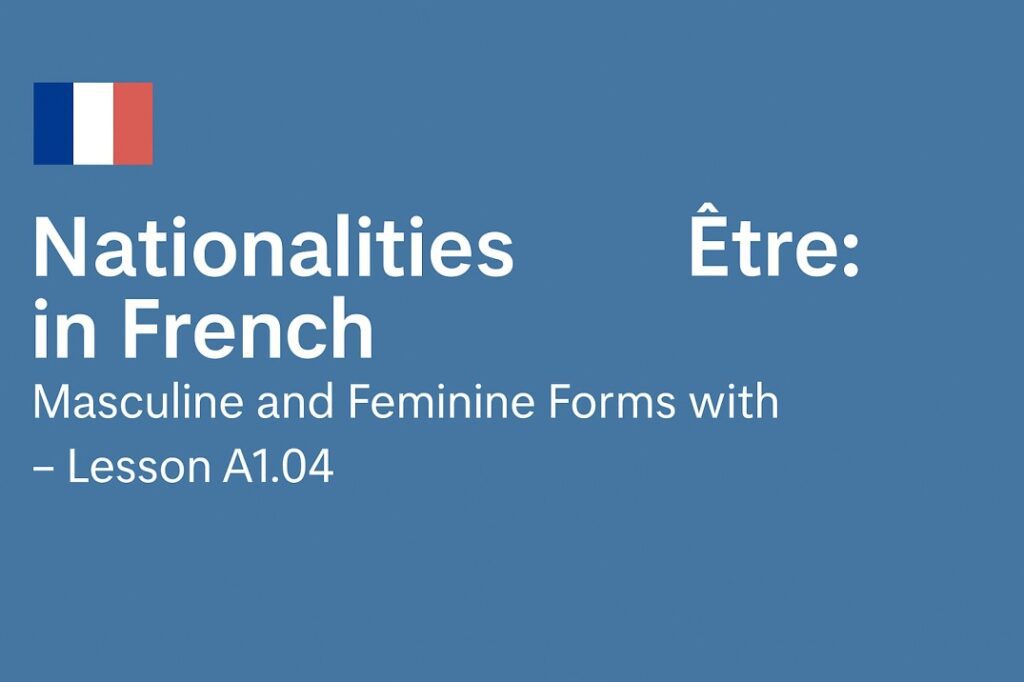Welcome to Lesson A1.04 of our French Online Course. Today, we will continue using the verb être (to be) and learn how to describe nationalities in both masculine and feminine forms. This is an essential part of presenting yourself and talking about others in French. Nationalities in french
Understanding the Basics
In French, nationalities agree in gender (masculine or feminine) with the person they describe. That means:
If you’re a man, you use the masculine form.
If you’re a woman, you use the feminine form.
Let’s take a look at the verb être (to be) in the present tense:
Je suis (I am)
Tu es (You are)
Il/Elle est (He/She is)
Nous sommes (We are)
Vous êtes (You are)
Ils/Elles sont (They are)
Now let’s combine it with nationalities.


